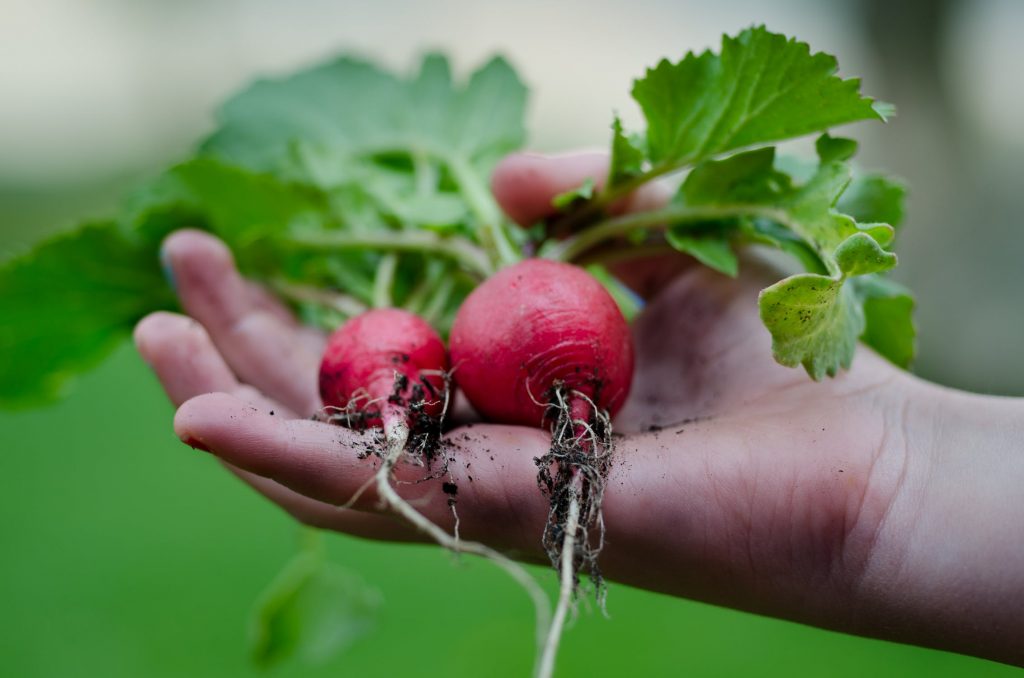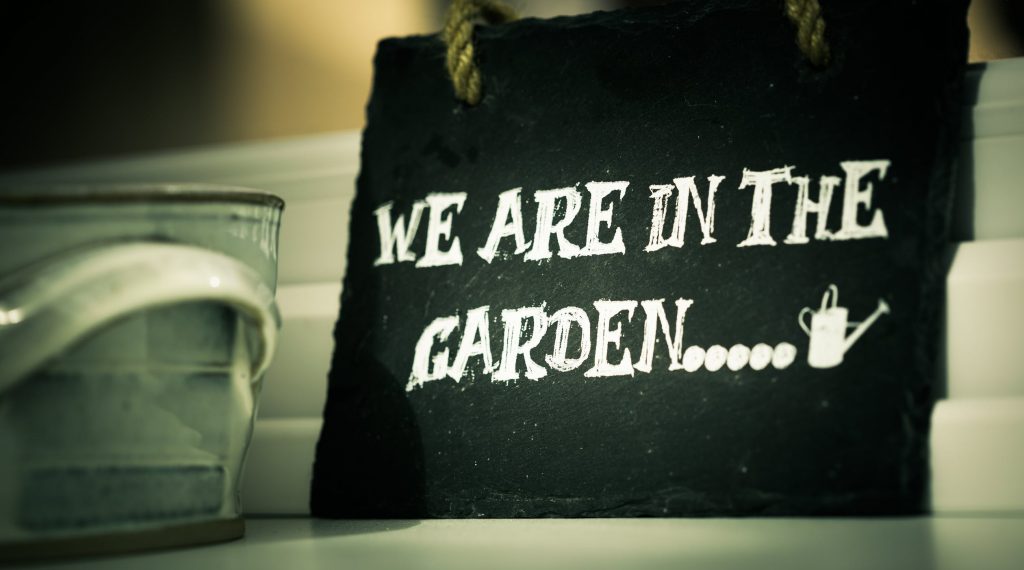There are many reasons to grow your own food. It’s an excellent way to keep an eye on your diet habits and improve them. Also, it’s a good method to downsize your monthly grocery bill and save some money. Gardening can be a perfect hobby you can do alone or with your family, especially the kids and teach them more about food and nature. So, in a way, besides being practical and economical, tending to a garden can be therapeutic and help you relax.

Food gardening is more than a rising trend. It may seem like quite an endeavor to start everything from scratch, but it can pay off after a while when the harvest comes. Basically, you will have to invest some money and effort at the beginning, which can be troubling for budget-restricted gardeners. Even if that is the case, you can still grow your own food. Here is everything you need to know about food gardening that will get you started.
1. Plan the gardening space
You can build your garden even in the smallest spaces if you plan it well. Small backyards and balconies are perfect to try vertical gardening. You can do it by hanging planters on the facade or fence walls, or you can stack containers into a vertical pyramid.
When planning a gardening space, you need to determine the best area based on sun exposure, as well. While some plants need a lot of sunlight, some may benefit more from a shaded spot so they don’t dry out fast or burn. If you have a large backyard, decluttering it before starting your garden may help you decide where to grow your plants. Finding a good place for food gardening can help you grow a successful crop right from the start.
2. Learn about soil types
Unfortunately, it’s not enough just to plant the seeds and wait for them to grow. There are some things you should know before starting your garden to ensure success. One of those things is the soil type where you will grow your plants. Knowing what type of soil you have at your disposal can save you money and a lot of time in the first try.

There are four types of spoil: clay, sandy, silt, and loamy. Of all four, sandy soil is the most difficult to grow plants because it is bad in holding water and has a low amount of nutrients. Clay is very sticky and the densest which doesn’t leave enough space for plant roots to grow and has poor drainage. Loamy is the combination of the other three soil types and best for farming. However, no matter what soil type you have, you can improve it to fit your needs with organic matter, like compost and humus.
3. Start with easy-to-grow plants
The beginner gardeners should start with easy-to-grow plants to still have a good harvest even though still learning about food gardening. This doesn’t mean that you won’t get some wonderful veggies and fruits on your table. Cabbage, bell peppers, zucchini, and tomatoes are some of the most gratifying vegetables to grow in your first garden.
If you want to add some fruits to your crops, strawberries, blackberries, and raspberries are a good start. Cucumbers may need more space but you can always grow them in containers, add trellis, and help them climb. Carrots, lettuce, garlic, onions, and green beans are also among the easy-to-grow plants, so you have a lot of choices even as a first-time gardener to have a great yield.
4. Talk to other gardeners
The key to saving money is in learning methods and tricks that will bring you more success. You can find out a lot about gardening techniques especially in your neighborhood if you talk to other gardeners. Farmers’ market is also a good place to learn more about gardening vegetables and fruits, especially if you want to use organic practices.
Additionally, knowing other gardening enthusiasts may be an ideal way to find seeds and seedlings at lower prices or even for free. Joining a gardening club or visiting a community garden can also be an excellent way to start and meet other likeminded people. You can even exchange seeds and produce with them later, and
5. Choose plants that are expensive to buy
If you expect to save money, it’s a good idea to grow plants that are expensive to buy. Also, if there are vegetables that you regularly eat, consider growing them instead of buying them. Of course, some plants are not that practical to grow, like an avocado tree that can take from 5 to 13 years to mature and give fruit.
Some of the more expensive vegetables are bell peppers, broccoli, garlic, cucumbers, berries, and kale are not so complicated to grow in your garden. Since these plants grow in abundance, you will always have fresh ingredients for a healthy meal. Kale and berries are especially great for smoothies, while cucumber water is perfect to keep you refreshed during hot summers.
6. Concentrate on easily-stored vegetables
Since you can grow a lot of produce in one season, maybe it’s a good idea to concentrate more on vegetables and fruits that are easily stored. This means both vegetables with long storage life or those that can be canned or frozen. Potatoes, onions, and winter squash can stay fresh for several months if you store them in the right place and appropriate temperature.
Freezing and canning may take some effort and time to prepare everything, but it’s still cheaper than buying such products in the store. It will also allow you, year-round, to have products on the table that is not in season and more expensive because of import.
7. Opt for dwarf fruit trees
Fruits may seem like too much effort and complication, but it doesn’t have to be that way for some. Potted fruit trees are not only great for balconies and porches, but also for gardeners who want to enjoy fresh produce from their garden. The most important thing to pay attention to is pollination since sometimes you may need more than one tree for successful crops. Cherries and peaches are self-fertile, so you can buy one plant, but apples and pears will need another one of their kind for pollination.
Lemon, orange, and fig trees are the most common to grow in gardens, but you can try some of the more exotic varieties, like dwarf Cavendish banana tree. If you like almonds, you will be happy to know that you can avoid buying this expensive nut and grow your own, like semi-dwarf variety Garden Prince.
8. Use the right tools
Just like with soil type and sun exposure, a lot depends on using the right garden equipment to tend to your crops. Instead of buying everything, start with the basic tools that are usually enough to successfully grow your first crop. These can include gloves, trowel, hose, and secateurs, but in the end, it all comes down to what plants you have in your garden.
It’s also a good idea to have a wheelbarrow since it can help you transport heavy loads to and from the garden. A dibber is another non-expensive but useful tool for making holes to plant your seeds and seedlings, or you can spend a little bit more for a digging spade.
9. Make your own compost
Compost is crucial to add nutrients to the soil and help your seedlings grow into healthy plants. There are many brands of compost available in the store, but it’s easy and budget-friendly to make your own. All you need to do is recycle yard and kitchen waste, instead of throwing it away in the garbage.
The secret to rich compost is the carbon/nitrogen ratio. Eggshells, coffee ground, tea bags, dried leaves, sawdust, and branches are an excellent source of carbon. As for nitrogen, green lawn clippings, green leaves, and kitchen waste will do. The rule is to use one-third of green materials for nitrogen and two-thirds of brown for carbon. However, don’t put meat, fish, and bones in your compost pile, and fruits that may have pesticides on them, like banana, peach, or orange peels.
10. Attend a gardening class
Joining a class may sound expensive, but it’s actually one of the things you can do for free. Many online gardening classes will show you how to grow vegetables, fruits, and herbs. You can also find the videos on how to make organic fertilizers, pest repellents, and compost.
If you want to build your own planters, there are many useful tips and instructions on how to do it with things you already have in your home, like old pots and cans. For those into DIY projects, you can learn how to make wooden planter boxes and pots.
Final thoughts
More and more people are becoming aware of the importance to pay attention to what they eat and how much they spend on food. While some produce is not possible to make especially in urban environments, everyone can have even the most modest of gardens. You can grow herbs on the window sill in the kitchen and have a lemon tree on the balcony.
But those who have more space in their backyard can turn it into a big vegetable and fruit garden with a supply of crops for the whole year. That way, you will control the quality of your food and save money by gardening. Moreover, you will enjoy the calming effects of gardening and can turn it into a fun time for the whole family.

Sarah Jessica Smith is a young blogger from Sydney. She is in love with life and all the things that can make her daily routine easier. She loves to write about home improvement, lifestyle, and all the small things that make life such a great adventure.
Categories: Lifestyle
Leave a Reply